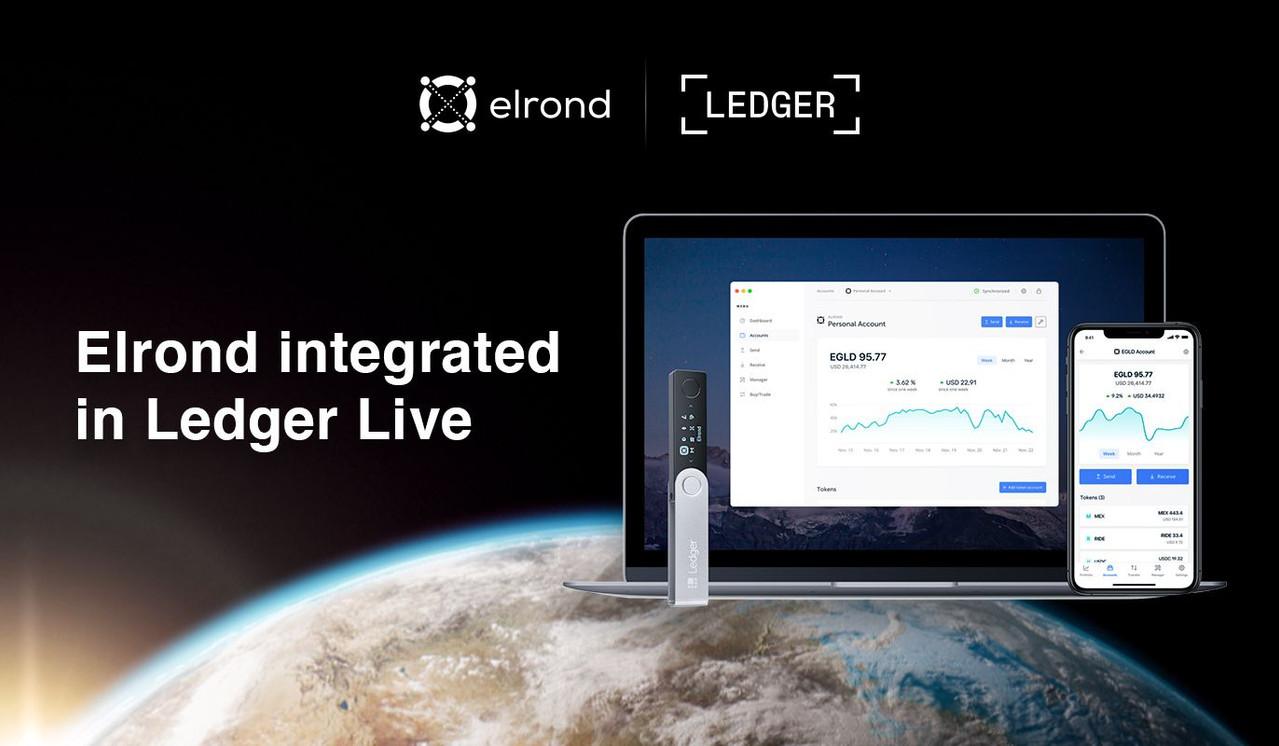Ledger.com/start — A friendly guide to get Ledger & Ledger Wallet™ working with Elrond (EGLD)
Clear, step-by-step instructions for beginners and intermediate users: how to use Ledger.com/start, install the right apps, manage EGLD (Elrond), and keep your private keys safe.
Beginner-friendly
Hardware wallet
EGLD Support

Quick overview — what's in this guide
This article walks you from the official starting page (Ledger.com/start) through installing Ledger Wallet and the MultiversX (Elrond) app, adding an EGLD account, and best practices for security (PIN, recovery phrase). Expect plain language, small analogies, and practical steps — no jargon-first approach.
Related terms you'll see in this article: hardware wallet, seed phrase, Ledger Live / Ledger Wallet, account derivation, staking.
Why begin at Ledger.com/start?
Ledger's official onboarding hub centralizes setup guides, device compatibility, and downloads. If you're unboxing a Ledger device or want to connect it to the companion app, this page is the official first stop — it's the curated path for installing Ledger Wallet, updating firmware, and finding device-specific documentation. :contentReference[oaicite:0]{index=0}
Step-by-step: From Ledger.com/start to EGLD in Ledger Wallet
1
Open Ledger.com/start
Click "Start using your Ledger device" for device download links and safety tips. If you need the app, use the Ledger Wallet download links provided there (desktop/mobile).
2
Install Ledger Wallet (formerly Ledger Live)
Install the Ledger Wallet app and complete the initial onboarding. The app is the bridge between your device's secure element and the accounts you manage. Ledger Wallet (formerly Ledger Live) is the official app and keeps your account data local. :contentReference[oaicite:1]{index=1}
3
Add MultiversX / Elrond app to your device
Use the Manager inside Ledger Wallet to install the MultiversX (EGLD) app on your device. Ledger's support docs describe installing the app and managing ESDT tokens via compatible wallets. :contentReference[oaicite:2]{index=2}
4
Connect a compatible third-party wallet (if needed)
Some ecosystems (like MultiversX) also support third-party wallet GUIs that pair with Ledger for transaction signing — follow the wallet's guide to "connect hardware wallet" and use Ledger to sign.
5
Receive, send, and consider staking
Once the account is created in Ledger Wallet or a linked third-party app, you can receive EGLD, send transactions (signed on device), and explore staking or DeFi features that the wallet exposes.
6
Confirm security basics
Never share your 24-word recovery phrase. Keep your firmware up to date via Ledger Wallet and verify the app name on the device before approving transactions.
Quick comparison: Ledger Wallet vs. Third-party wallets (for EGLD)
Feature
Ledger Wallet
MultiversX / Third-Party Wallet
Private keys
Stored on device (Secure Element)
Local but uses Ledger for signing (varies)
Supported tokens
Many, via Ledger apps and supported tokens list
Often first to support token features
User experience
Tight device integration, curated UX
Often more feature-rich for chain-specific actions
A short analogy
Think of your crypto like a safe deposit box (your assets) and Ledger as the bank's lock — Ledger Wallet is the bank teller interface. The private key never leaves the lock (Ledger device). When you want to move funds, you hand the transaction to the device to sign — like giving the teller a signed withdrawal form that only you can authorize.
Security highlight
Never enter your 24-word recovery phrase into a website or an app. The recovery phrase is the last resort to restore a device and must stay offline. Ledger's onboarding and support pages emphasize this best practice prominently. :contentReference[oaicite:3]{index=3}
FAQs — fast answers
Q: Is Ledger.com/start the official place to begin?
A: Yes — it's the official onboarding hub with device-specific setup, downloads, and safety guides. :contentReference[oaicite:4]{index=4}
Q: Can I manage EGLD directly in Ledger Wallet?
A: Ledger introduced EGLD support through integration, and Elrond (EGLD) can be managed through Ledger Live / companion flows; for some features you may use a MultiversX-compatible third-party wallet with Ledger as the signer. :contentReference[oaicite:5]{index=5}
Q: What if the Ledger Wallet app crashes when opening EGLD?
A: That can be caused by app conflicts or outdated firmware. Ensure Ledger OS and the Ledger Wallet app are updated via Ledger.com/start and consult Ledger support articles. :contentReference[oaicite:6]{index=6}
Practical tips before you transact
- Double-check the receiving address: paste it into a text editor and verify the first/last 6 characters before sending.
- Confirm the app name on the device screen during approvals — attackers can only phish if your device shows a different app name.
- Keep firmware updated but verify release notes on Ledger's official pages before updating to avoid rushed mistakes.
- For chain-specific actions (staking, smart contracts), prefer the wallet recommended by the protocol and use Ledger strictly for signing.
Wrap up — start confidently at Ledger.com/start
If you're new to hardware wallets, beginning at Ledger.com/start gives you an official, stepwise route: download Ledger Wallet, install the MultiversX (EGLD) app, and link a supporting wallet to sign transactions securely. Treat the device as the secure lock for your crypto — Ledger Wallet is the interface, and your seed phrase is the master key that never leaves offline storage. :contentReference[oaicite:7]{index=7}
Want a simple checklist? 1) Visit Ledger.com/start. 2) Install Ledger Wallet. 3) Install MultiversX / EGLD app from Manager. 4) Create or pair an EGLD account. 5) Practice with a small test transfer. Safe habits beat panic — and the first step is always the official start page.
Written for beginners & mid-level crypto users — friendly guide for Ledger & Elrond interactions.
SEO keyword: Ledger.com/start